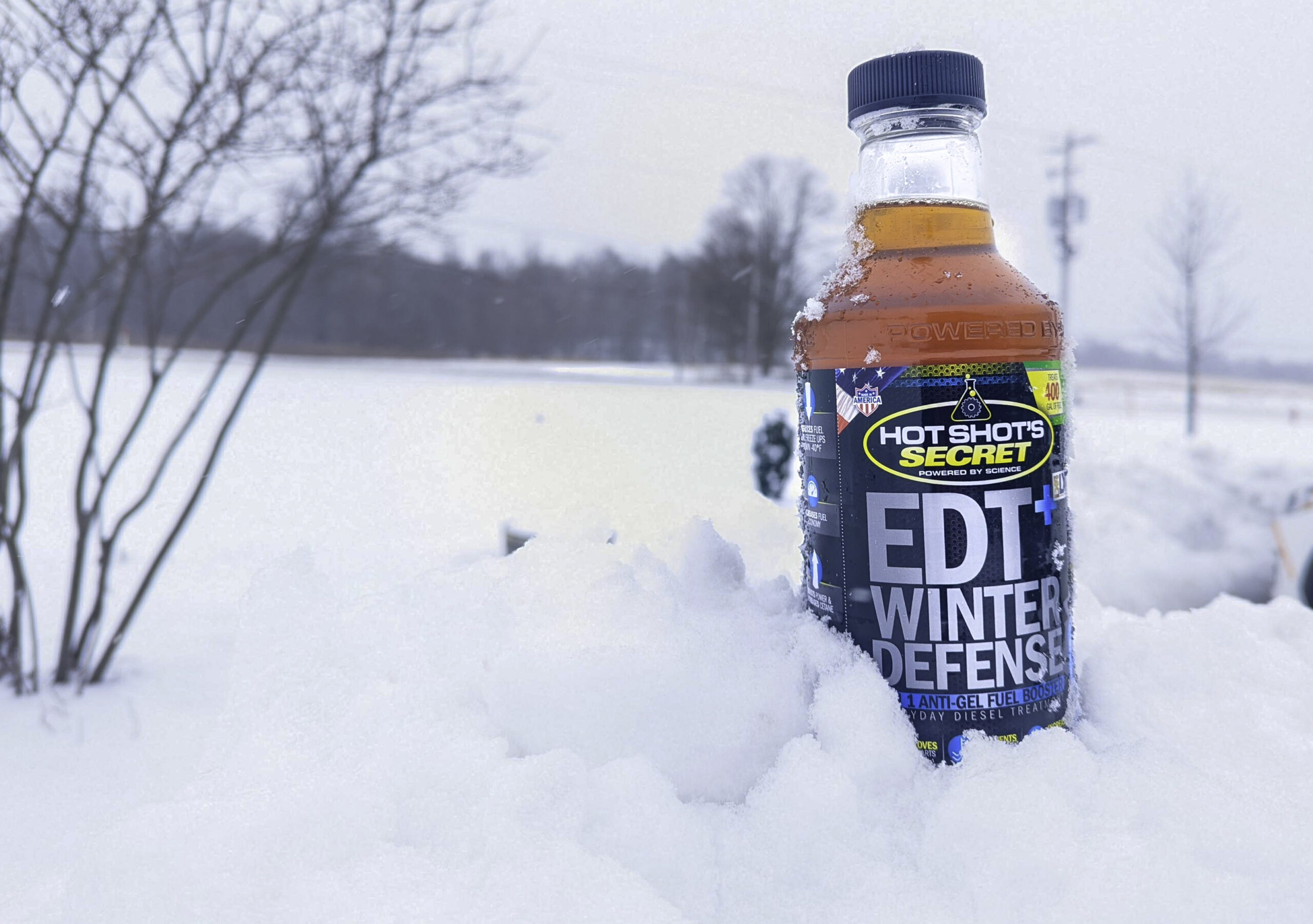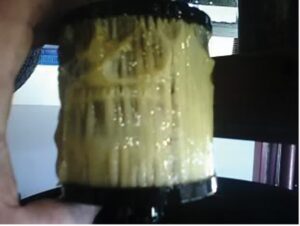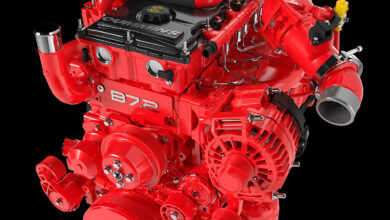Don’t Let the Cold Slow You Down: 3 Methods to Keep Diesel from Gelling
Sponsored by Hot Shot's Secret

Every diesel owner understands the hardships that follow the drop in temperatures. With Winter right around the corner, it is time to start helping your customers prepare for common problems that arise and trying to be one step ahead of them to keep diesel from gelling. Part of that preparation should be to understand how cold weather will affect the performance of a diesel engine.
Why Do Wax Crystals Form in Diesel Fuel?
A small percentage of diesel fuel is paraffin wax. Under mild to high temperatures, this wax helps an engine to generate more power and efficiency from the fuel. However, under lower temperature conditions the wax crystallizes and thickens the fuel. If temperatures drop too low and enough of the wax has crystallized, the flow of fuel will begin to slow down and eventually could plug the fuel lines and filter, completely robbing the engine of fuel.
How Do I Tell if Crystals Are Forming in My Diesel Fuel?
Some early signs this may be happening to your fuel will be hard starts, a noticeable loss of power, and dips in overall fuel economy. If you are noticing any of these signs during cold weather, you should take action immediately by adding an anti-gelling additive to your fuel. Doing so can help prevent the worst-case scenario, which is a plugged fuel filter. The point at which the fuel is no longer able to flow through the filter is known as the cold filter plugging point (CFPP). The CFPP can be as high as 0 degrees Fahrenheit depending on the quality of the fuel.
How to Keep Diesel from Gelling
 You can undo gelling, but it is best to prevent it from happening in the first place. One preventative method is to use a specially designed fuel additive such as Hot Shot’s Secret EDT+ Winter Defense promoting coverage down to -40°F. A treatment of anti-gel additive is recommended with every fill-up for best results. Any anti-gel additive should be added to fuel before reaching the cloud point. The cloud point refers to the temperature at which wax in diesel forms a cloudy appearance. By adding an anti-gel additive at the pump, you get the advantage of warmer fuel from underground tanks, preventing fuel gelling in its tracks.
You can undo gelling, but it is best to prevent it from happening in the first place. One preventative method is to use a specially designed fuel additive such as Hot Shot’s Secret EDT+ Winter Defense promoting coverage down to -40°F. A treatment of anti-gel additive is recommended with every fill-up for best results. Any anti-gel additive should be added to fuel before reaching the cloud point. The cloud point refers to the temperature at which wax in diesel forms a cloudy appearance. By adding an anti-gel additive at the pump, you get the advantage of warmer fuel from underground tanks, preventing fuel gelling in its tracks.
How to Fix Gelled Diesel Fuel?
When a diesel vehicle won’t start at all, many make the mistake of grabbing a can of ether to begin the combustion process. There are some risks with this solution, however, as there may be no fuel to actually ignite. Over spraying too much ether and having un-contained ether spray creates even more problems. The un-contained spray could ignite other hot components causing engine damage, or putting too much ether in the fuel line could simply ignite air in the lines rather than fuel which could also badly damage the diesel engine. Fortunately, options exist that are much safer than spraying ether. Here are a few preventive tips:
Heat: The best line of defense is to apply heat. Storing your vehicle in a climate-controlled garage or heated environment prevents susceptibility to freezing temperatures. Other tactics can range from a series of light bulbs under the vehicle emitting heat, wrapping the vehicle in a tarp with a heater blowing heat, to the modern-day block heater installed on the engine, keeping the vehicle protected from the frigid temperatures. The utility companies will love you too while racking up the electric bills.
Kerosene: With the challenge of staying warm at 20 degrees below zero, folks still have a couple of other options by modifying the fuel mixture itself. The most common use is pouring kerosene into the fuel tank to lower the point of freezing. To further take advantage of the lower freezing point of kerosene many often mix #1 diesel, which blends kerosene with #2 diesel fuel. The northern regions of the country often provide this blend but in the southern regions with typically warmer temperatures, the #1 diesel may not be available. In either case, kerosene has its disadvantages as well, more than anything reduced fuel mileage and efficiency. If however, the truck stops running and the use of kerosene is the choice, it is highly advisable to let the engine run long enough to combine the fuels providing a steady flow of the mixture. Consider in a semi-truck for example, when working with 100’s of gallons of fuel in a tank, the time it takes for the kerosene to thaw the tank. The kerosene then also has to thaw the clogged fuel filter and frozen lines. It may take an hour of idle to thaw the entire line from the fuel tank, to the filter, to the injectors.
Fuel Additives: There are now fuel additives that can provide an easy, low cost, and no-hassle solution to prevent gelling; one that any vehicle owner can do on their own. When considering an additive, be sure to do your due diligence and compare all the products and claims. It’s sometimes worth a little extra time and attention to find the best product. Just like wearing layers of clothes in the cold, additives are a way to add an extra layer of protection to prevent the wax in diesel fuel from getting thick. Many products use alcohol, and to research a product that provides not only adequate temperature coverage but also protection for the full system including lubricity, cetane, water dispersion, and a guarantee for success. Many preventive offerings are available with some top choices immediately available such as EDT+ Winter Defense and Diesel Winter Anti-Gel promoting coverage down to -40°F.
The best defense against diesel gelling is prevention. By using an additive such as Hot Shot’s Secret EDT+ Winter Defense with every fill-up during the cold-weather season, your customer can keep their vehicle moving down the road. EDT+ Winter Defense has the added benefits of increased cetane and lubricity for better performance. If gelling does occur, it’s best to use an emergency additive such as Hot Shot’s Secret Diesel Winter Rescue to re-liquefy gelled fuel, getting your diesel engine running again.
About This Sponsored Content
Hot Shot’s Secret offers a diverse line of high-performance and preventative maintenance products including fuel and oil additives, engine and gear oil, greases, lubricants, and coolants developed as problem-specific solutions for gas- and diesel-powered vehicles. Major markets include automotive, racing, heavy-duty, fleet, power sports, RV, and agriculture.



